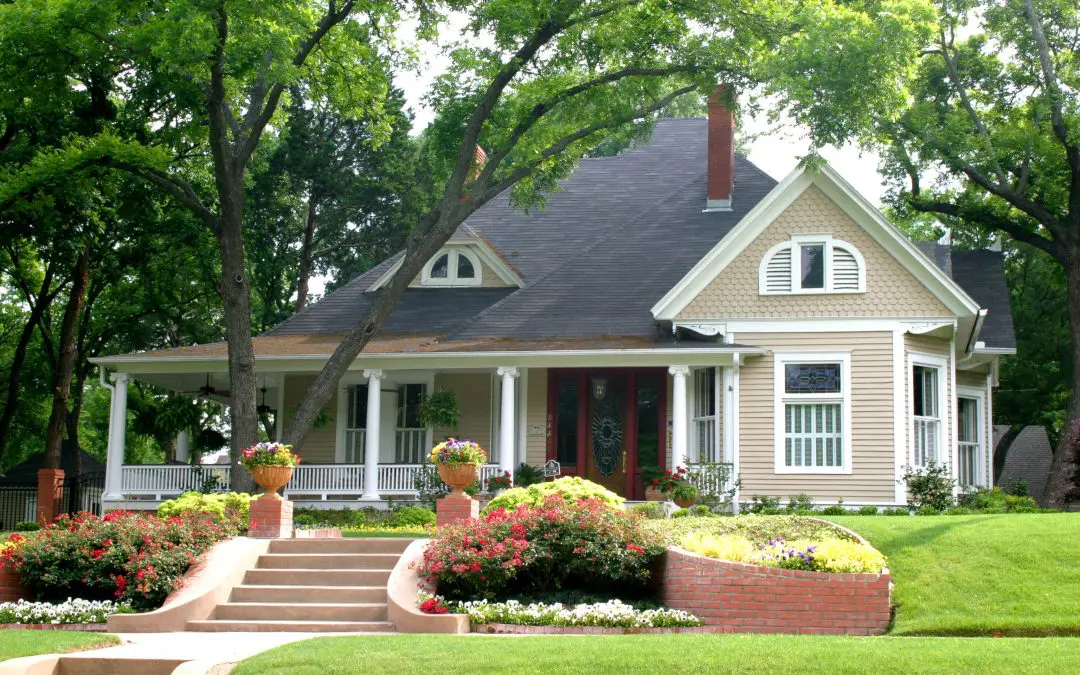When you think about your yard, do you picture relaxing weekends in a hammock or endless hours pushing a mower and pulling weeds? If you’re leaning toward the second image, it might be time to rethink your landscaping approach. The good news is that low-maintenance landscaping doesn’t mean boring or bare. You can have a beautiful, inviting outdoor space without spending every weekend tending to it.
The key is to work with nature, not against it. Choosing the right plants, materials, and layout can drastically reduce your yard work and save water and money.
Choose Plants That Thrive Where You Live
One of the biggest mistakes people make when landscaping is planting things that need constant care. Tropical flowers might look amazing, but if you live somewhere with harsh winters or dry summers, it will take hard work to keep them alive.
Instead, go for native plants that naturally grow in your region. These plants are already adapted to the local weather, soil, and pests, so they can take care of themselves once they’re established. Bonus: native plants also attract local birds and pollinators, giving your yard more life and color.
Perennials are another smart choice. Since they come back year after year, you don’t have to replant every spring. Ornamental grasses, lavender, coneflowers, and daylilies are all great options, depending on your climate.
Ditch the Thirsty Lawn for Low-Maintenance Landscaping
A lush, green lawn may look nice, but it’s one of the most high-maintenance parts of any yard. Between mowing, watering, fertilizing, and fighting off weeds, it’s basically a full-time job. If you’re ready to free up your weekends, consider shrinking your lawn—or getting rid of it altogether.
You can replace sections of your grass with gravel, mulch, or groundcovers like creeping thyme or clover. These options need way less water and upkeep, but still give you that finished look. If you still want a patch of green, artificial turf has come a long way and can look surprisingly real with zero mowing required.
Go for Mulch and Rock Over Weeds and Worry
Mulch is a game-changer for low-maintenance landscaping. Spread it around trees, flower beds, and shrubs, and it does a ton of work for you. It helps soil hold moisture, blocks weeds from sprouting, and gives your yard a neat, polished look. Organic mulches like bark or wood chips break down over time and improve soil health, while inorganic mulches like rubber or stone last longer without needing to be replaced.
Gravel and river rock are also great for pathways and decorative areas. They don’t need watering, won’t grow weeds as easily, and create a clean, modern look. Install a good weed barrier underneath for best results.
Install Smart Irrigation
Dragging hoses around the yard is a hassle. A smart irrigation system, like drip lines or soaker hoses, delivers water right to the roots of your plants, exactly where it’s needed. That means less waste, lower bills, and healthier plants.
Many modern systems come with timers or sensors that adjust for weather and soil moisture, so your yard gets just the right amount of water. Once it’s set up, it will do the work for you.
Keep It Simple with Hardscaping
If you want a low-maintenance yard, think beyond plants. Hardscaping—like patios, decks, stone pathways, or even a fire pit—adds structure and function to your yard with almost zero upkeep. These elements also give you more usable outdoor living space, which is perfect for entertaining or just kicking back.
Materials like concrete, flagstone, pavers, and gravel don’t need watering, pruning, or fertilizing, and they stand up to all kinds of weather. When done right, they can boost your home’s curb appeal and value, too.
Design Low-Maintenance Landscaping With Maintenance in Mind
The layout of your landscaping plays a big role in how easy it is to maintain. Group plants with similar water and sunlight needs together so you’re not constantly adjusting your watering routine. Create wide borders and clean edges so you can mow or trim without fuss. And leave some open space—you don’t have to fill every inch with plants or decor.
Sometimes, less really is more. A well-placed tree, a cozy sitting area, and a few low-maintenance plants can make your yard feel complete without becoming a full-time job.
FAQs About Low-Maintenance Landscaping
How do I start transitioning to a low-maintenance yard?
Start small. Replace one flower bed or corner of your lawn with native plants or mulch. Gradually build from there based on what works for your space and budget.
Are low-maintenance landscapes boring?
Not at all. With the right mix of textures, colors, and materials, your yard can look beautiful and dynamic year-round—without all the work.
Do native plants really make a difference?
Yes. They require less water, fertilizer, and attention because they’re already suited to your local environment. Plus, they support local wildlife and ecosystems.
Is artificial turf a good option?
It can be. For small areas or spaces where grass just won’t grow, artificial turf offers a green look with zero maintenance. Just make sure it’s installed properly and has good drainage.
How much does low-maintenance landscaping cost?
It depends on the size of your yard and the materials you choose. While the upfront cost may be higher than traditional landscaping, the savings in water, fertilizer, and time often pay off in the long run.
Homesmith Home Inspections provides inspection services to buyers and sellers in the Houston, Texas area. Contact us to request an appointment.

